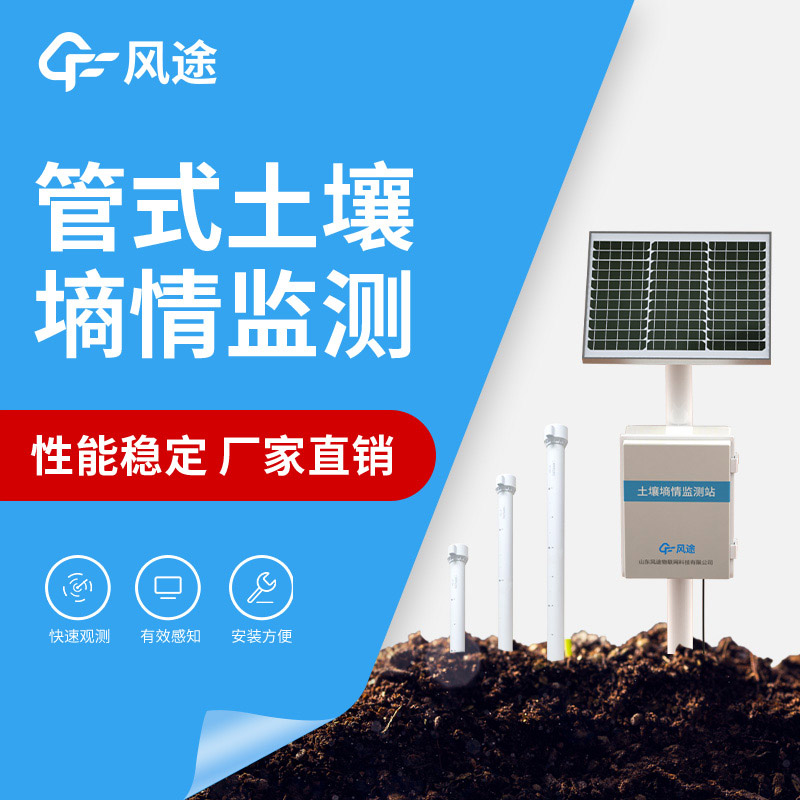Shandong Fengtu IOT Technology Co., Ltd
Sales Manager:Ms. Emily Wang
Cel,Whatsapp,Wechat:+86 15898932201
Email:info@fengtutec.com
Add:No. 155 Optoelectronic Industry Accelerator, Gaoxin District, Weifang, Shandong, China

Sales Manager:Ms. Emily Wang
Cel,Whatsapp,Wechat:+86 15898932201
Email:info@fengtutec.com
Add:No. 155 Optoelectronic Industry Accelerator, Gaoxin District, Weifang, Shandong, China
time:2024-11-08 08:39:43 source:Weather Station viewed:421 time
Winter wheat and summer corn have their own requirements for soil moisture conditions. For winter wheat, a soil relative water content of 70% - 75% is ideal for sowing, which facilitates seed-soil contact and germination. Too dry or too wet conditions can affect germination and seedling growth. During the overwintering period, maintaining a soil relative water content of 60% - 70% can buffer against low-temperature damage. From the tillering to jointing stage, a soil relative water content of 70% - 80% can promote tillering and other growth, and water scarcity can inhibit development. During the booting to milking stage, a water content of 75% - 85% ensures photosynthesis and full grain, and water scarcity can reduce yield and quality.
For summer corn, a soil relative water content of 65% - 75% is conducive to seed germination and seedling growth, and irrigation may be necessary to create suitable soil moisture conditions. During the seedling stage, a soil relative water content of 60% - 70% is sufficient to promote root growth, and excessive drought can affect growth. From the jointing to tasseling stage, a soil relative water content of 70% - 80% ensures plant growth and tassel differentiation, and water scarcity at this stage can lead to "neck drought." During the milking stage, it is best to maintain a soil relative water content of 70% - 75% to ensure the transport of photosynthetic products, and water scarcity can result in insufficient grain filling, tip baldness, and shriveled grains, reducing yield.
There is now an instrument that can monitor soil moisture conditions in real-time. For example, the Tubular soil moisture detector FT-GTS, based on the principle of dielectric constant, involves burying a plastic tube with the main sensor placed inside. It emits high-frequency probing waves that penetrate the plastic tube to sense the soil environment. It observes at different levels, with a temperature observation point on the ground and a temperature and humidity measurement point every 10 centimeters underground, allowing for precise observation of the temperature and humidity of different soil layers and a comprehensive understanding of the vertical distribution of soil moisture. Moreover, the sensors are easy to remove and replace, have a high rate of maintenance convenience and recyclability, and the monitoring system platform can remotely view the latest data, historical data, units, warning upper and lower limits, status, and other content through a Web page. It also allows for parameter settings and viewing of alarm records.

water level sensor is a device that measures the level in a fixed container that is too high or too low. When the water level reaches a certain point, the sensor sends a signal to the relay for automatic water management....
Soil moisture conditions, often referred to as soil moisture, are critical to agricultural production. Soil moisture is directly related to the growing conditions of crops and is one of the key environmental factors that determine the health of crops.Knowing the exact level of soil moisture and its...
In fields such as meteorological research, agricultural irrigation, urban drainage planning, and water conservancy projects, it is crucial to accurately grasp rainfall data. Accurate rainfall monitoring not only provides important basic data for weather forecasting but also helps the agricultural se...
Soil moisture is a core indicator of soil moisture required for crop growth, and comprehensive, scientific and realistic data on soil moisture changes can be obtained through monitoring. These data play a key role in the formulation of effective drought prevention and water-saving irrigation strateg...